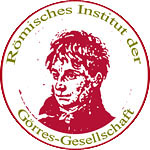Jobst C. Knigge: Germans in Rome after 1945
Jobst C. Knigge has published a new volume on ‘Germans in Rome after 1945’ in the ‘Studien zur Zeitgeschichte’ series published by Dr Kovac in Hamburg.
The book begins with the return of German scientific and cultural institutions to Rome after the end of the Second World War. Over 130 Germans are presented, mainly from the fields of science, culture, churches and diplomacy. But artists, writers, actors, composers, hippies, terrorists and war criminals also play a role. Hubert Jedin, Hermann Stoeckle and Engelbert Kirschbaum are mentioned on behalf of the Roman Institute of the Görres Society.
Although the volume only offers an initial overview of the who's who of post-war Germans in Rome, it is an entertaining and highly interesting read precisely because it includes many names that one might not associate with Rome at first glance, such as Klaus Kinski, Hans Magnus Enzenzberger, Rudi Dutschke and Mario Adorf. In addition, the texts are garnished with remarkable illustrations.
A small error has crept in with regard to the Campo Santo Teutonico: Father Robert Leiber SJ, the private secretary of Pius XII, was not buried there (p. 144).
- Details
- Written by: Stefan Heid
- Category: Recommended reading
 Römisches Institut der Görres-Gesellschaft
Römisches Institut der Görres-Gesellschaft







